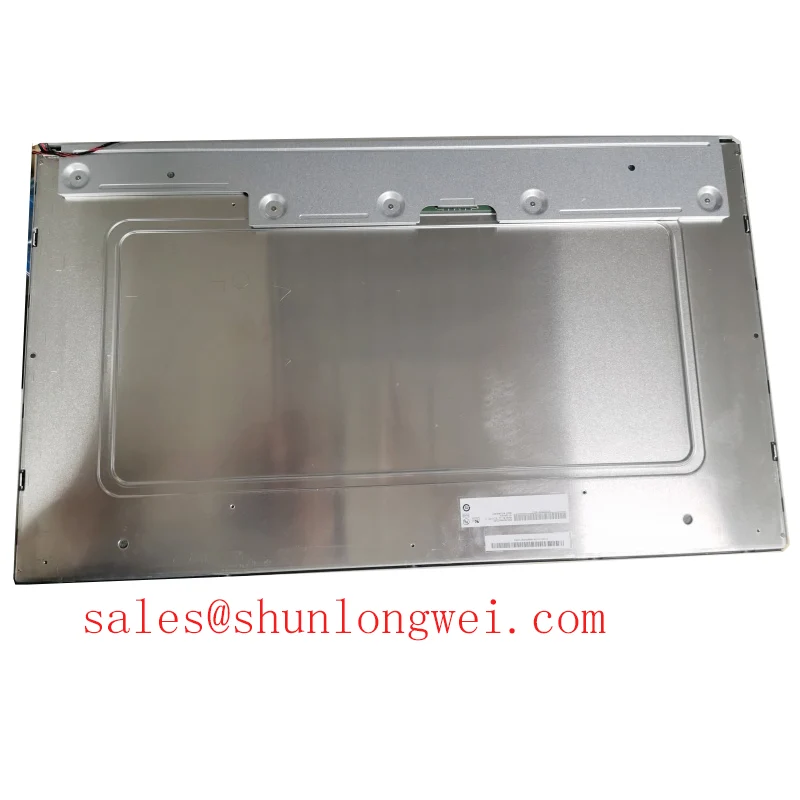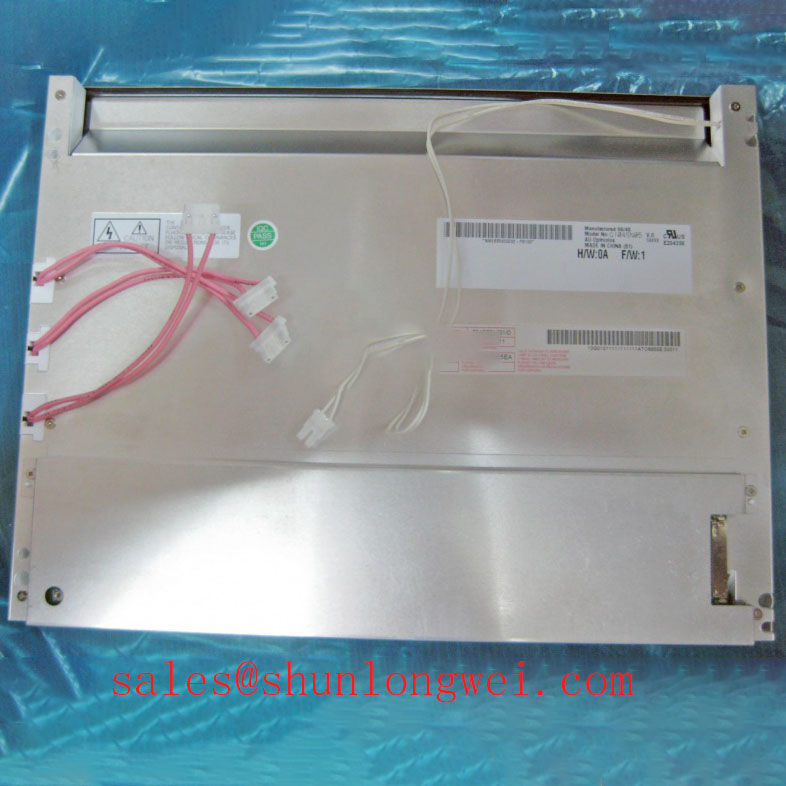Content last revised on November 18, 2025
AUO G270ZAN01.3: Engineering Visual Precision with 4K UHD Resolution and Expansive Color Gamut
An In-Depth Technical Review of the G270ZAN01.3 27.0-inch AHVA TFT-LCD Module
The AUO G270ZAN01.3 delivers elite visual performance for professional systems where image clarity and color fidelity are critical design parameters. This 27.0-inch TFT-LCD module combines 4K Ultra HD resolution with an exceptionally wide color gamut, providing the detailed, accurate image reproduction required for high-stakes applications. With key specifications of 3840x2160 pixels | 99% Adobe RGB | 1000:1 Contrast Ratio, it offers superior pixel density and true-to-life color rendering. Its primary benefits include eliminating ambiguity in detailed visual analysis and ensuring consistent color representation across workflows. For system integrators designing next-generation medical displays or broadcast monitors, this panel provides the foundational imaging quality to meet stringent industry standards. What is the key advantage of its AHVA technology? It ensures consistent image quality and color accuracy across ultra-wide viewing angles.
Key Parameter Overview
Decoding the Specs for Color-Critical System Design
The G270ZAN01.3's specifications are tailored for applications demanding the highest level of visual accuracy. The combination of UHD resolution and a wide color gamut provides engineers with a platform to build systems that can render complex data and high-fidelity imagery without compromise. The following parameters are central to its performance profile.
| Parameter | Specification | Engineering Significance |
|---|---|---|
| Screen Size | 27.0 inch | Provides a large, immersive viewing area suitable for detailed analysis without excessive zooming or panning. |
| Resolution | 3840(RGB) x 2160 [UHD] | With 163 pixels per inch (PPI), it delivers exceptionally sharp images, making fine lines in CAD/CAM designs or subtle anomalies in medical imaging clearly visible. |
| Display Technology | AHVA, Normally Black, Transmissive | Advanced Hyper-Viewing Angle (AHVA) technology ensures minimal color shift from off-axis positions, a critical requirement for collaborative environments. |
| Color Gamut | 99% Adobe RGB | Crucial for professional workflows in post-production and graphic design, ensuring that on-screen colors accurately match print and other calibrated displays. |
| Luminance | 350 cd/m² (Typ.) | Offers bright, clear images suitable for typical indoor industrial and medical environments. |
| Contrast Ratio | 1000:1 (Typ.) | Delivers deep blacks and distinct grayscales, enhancing image depth and readability in complex visuals like radiological scans. |
| Interface Type | DisplayPort (2) , 4 Lanes | Provides the high bandwidth required to drive a 4K resolution panel at a 60Hz refresh rate, ensuring smooth video playback and system responsiveness. |
| Operating Temperature | 0 ~ 50 °C | Engineered for stable performance in controlled industrial, broadcast studio, and clinical settings. |
Download the G270ZAN01.3 datasheet for detailed specifications and performance curves.
Application Scenarios & Value
System-Level Benefits in High-Resolution Imaging Systems
The G270ZAN01.3 is purpose-built for OEM applications where visual precision directly impacts operational outcomes. Its feature set translates into tangible value across several demanding sectors.
- Medical Imaging & Diagnostics: In applications like digital pathology and radiology, the 4K UHD resolution allows clinicians to view tissue samples or scans with cellular-level detail. This high pixel density can be the deciding factor in making a confident diagnosis, akin to having a more powerful microscope. The panel's adherence to the Adobe RGB color space is critical for accurately interpreting stained tissue samples where color variations signify different biological states.
- Broadcast and Post-Production: For video editors and colorists, achieving accurate color grading is non-negotiable. The 99% Adobe RGB gamut ensures that the final output meets the creative director's intent and maintains consistency across the production workflow. The high resolution provides ample screen real estate for timelines, scopes, and a full-resolution 4K preview window, streamlining editing operations.
- Industrial Design and CAD/CAM: Engineers and designers working with complex assemblies benefit from the extreme detail afforded by the 163 PPI. Fine geometric details and surface textures are rendered crisply, reducing errors and improving the design review process. The wide viewing angles facilitate collaborative sessions where a team needs to review a design from various positions around the display.
While the G270ZAN01.3 is a premier choice for 4K applications, for full-HD systems that still require excellent color and viewing angles, the related G215HAN01.0 offers a compelling alternative in a smaller form factor.
Frequently Asked Questions (FAQ)
What is the primary advantage of the AHVA technology used in the G270ZAN01.3?
Advanced Hyper-Viewing Angle (AHVA) technology, similar to IPS, is crucial for maintaining color and contrast consistency when the screen is viewed from off-center angles. This is a critical feature in medical operating rooms where multiple personnel view the display from different positions, or in client-facing presentation monitors. It ensures that the image integrity is preserved up to 89 degrees in every direction.
How does the 99% Adobe RGB color gamut impact system design for professional graphics applications?
A 99% Adobe RGB gamut provides a significantly wider range of colors, particularly in the greens and cyans, compared to a standard sRGB panel. For engineers designing systems for print proofing or professional photography, this means the display can accurately reproduce colors that would otherwise be out of gamut. This reduces the cycle of costly test prints and ensures what is seen on screen is a faithful representation of the final physical product.
What are the integration considerations for driving a 4K 60Hz panel like the G270ZAN01.3?
Driving this panel requires a graphics controller or host system with a DisplayPort 1.2 (or higher) output. The interface uses 4 lanes to handle the substantial data rate (over 17 Gbps) required for 3840x2160 resolution at a 60Hz refresh rate with 8-bit color. System integrators must ensure their driving board and cabling are compliant to avoid issues like flickering or signal loss.
Technical Deep Dive
The Engineering Impact of Pixel Density and Color Space
The defining characteristics of the G270ZAN01.3 are its pixel density and color space, which work in tandem to create superior image fidelity. At 163 PPI, the pixel structure becomes virtually invisible at a normal viewing distance. For a system designer, this means that on-screen text and fine lines are rendered with print-like sharpness, reducing aliasing and improving readability. Think of this as the difference between a standard definition television and a high-resolution photograph; the density of information points in the photograph allows for a far more realistic and detailed representation.
This high resolution is complemented by the 99% Adobe RGB color space. A color space is essentially the palette of colors a display can produce. While standard sRGB is sufficient for general use, Adobe RGB is about 35% larger. This expanded palette is vital in professional fields. For instance, in medical diagnostics, certain stains used in pathology have subtle color shifts that are only visible within the Adobe RGB gamut. A display limited to sRGB might render these critical variations as the same color, potentially masking important diagnostic information. By providing both high resolution and an expanded color space, the G270ZAN01.3 provides a canvas for applications where every pixel and every shade matters.
Strategic Outlook for High-Fidelity Display Integration
Integrating a panel like the AUO G270ZAN01.3 is a strategic decision to future-proof high-end systems. As industries from healthcare to media adopt 4K workflows and demand greater color accuracy, specifying displays that meet these advanced requirements becomes a competitive advantage. This module provides a robust foundation for developing equipment that not only meets current standards for AUO's medical or industrial imaging but is also prepared for the next wave of high-dynamic-range (HDR) content and even more demanding color precision. For OEMs, choosing this panel signals a commitment to providing end-users with the highest possible visual quality, enhancing the perceived value and operational effectiveness of the final product.











